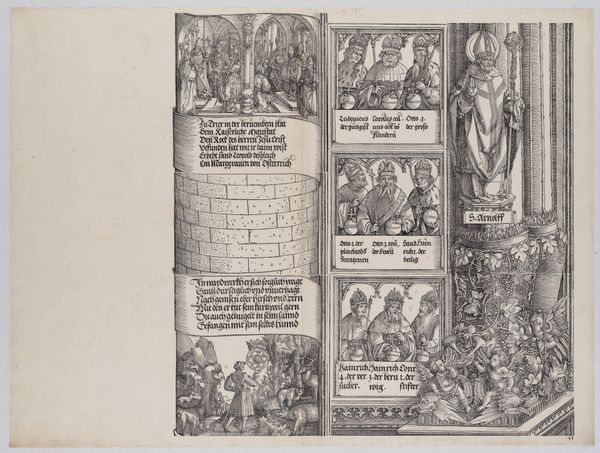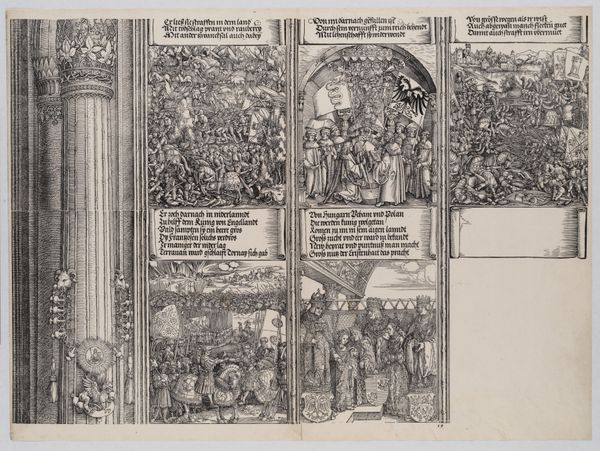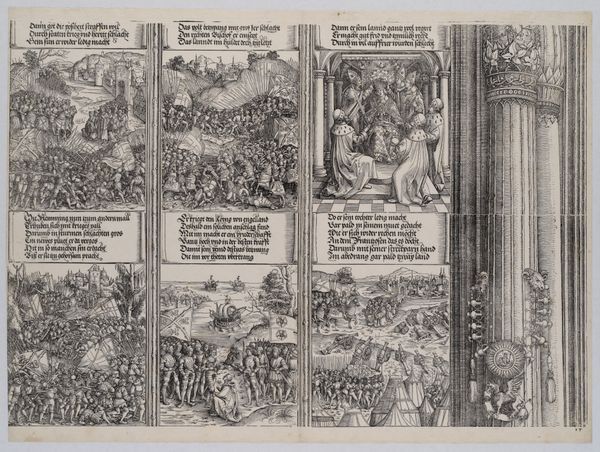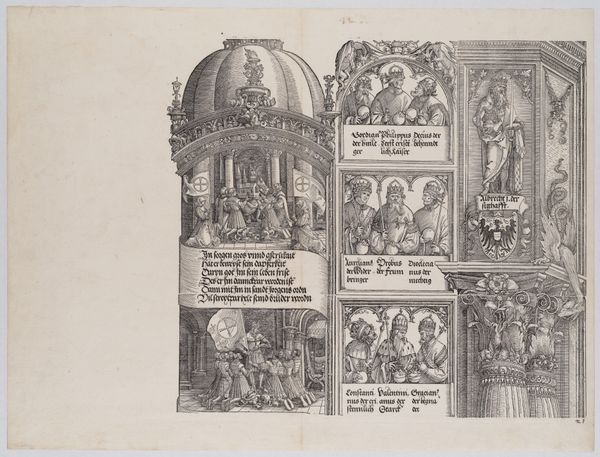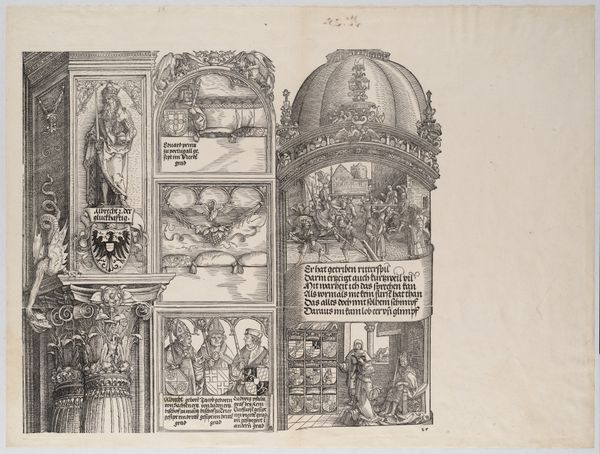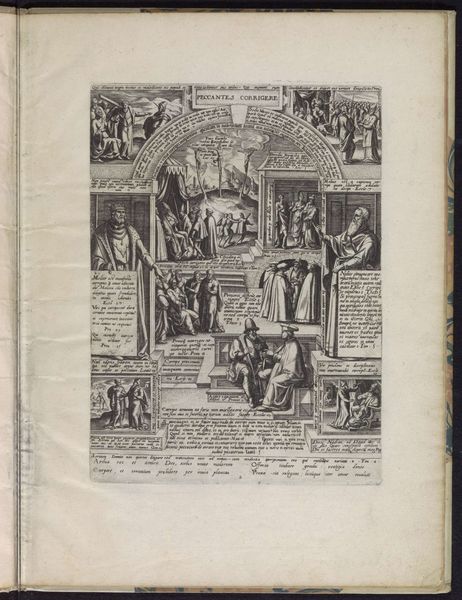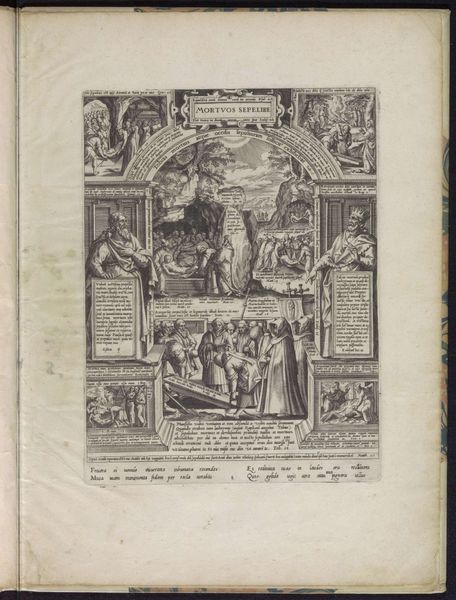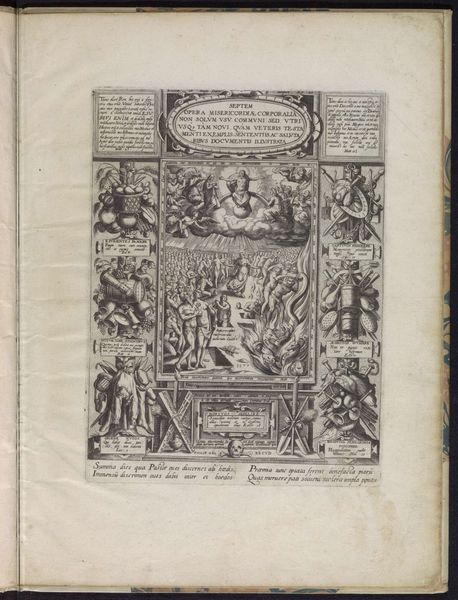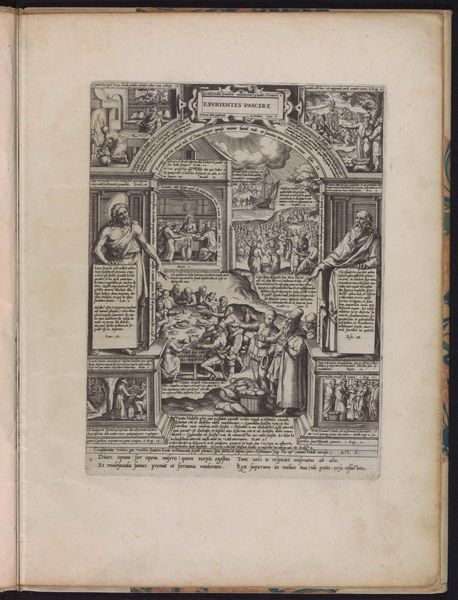
Maximilian as Commander-in-Chief; and Maximilian Conversing in Seven Languages; with Portraits of Emperors and Kings (Maximilian's Forerunners), from the Arch of Honor, proof, dated 1515, printed 1517-18 1515
0:00
0:00
drawing, print, woodcut
#
portrait
#
drawing
# print
#
woodcut
#
history-painting
#
northern-renaissance
Dimensions: Sheet: 18 1/4 × 24 1/4 in. (46.4 × 61.6 cm)
Copyright: Public Domain
Curator: This print, "Maximilian as Commander-in-Chief; and Maximilian Conversing in Seven Languages," made as a woodcut by Albrecht Altdorfer around 1515, presents a complex image, quite common for the Northern Renaissance. Editor: Yes, there's a lot to take in! I’m immediately drawn to the banners with text alongside what seem like scenes of military life and then the framed figures. It's quite a detailed image. What do you see in it? Curator: What's compelling is the material means by which this image circulated. As a woodcut, this wasn't some unique artwork displayed in a private collection. Instead, it was intended to be reproduced and disseminated, influencing perceptions of Maximilian. Think about the labor involved in its production – from the making of the paper to the carving of the woodblock, and the printing itself. Each stage relies on craft and the social context surrounding these makers. Editor: So you are focusing on it as a multiple and the process? I hadn’t really considered it that way. Does that influence its artistic merit? Curator: Not in a simple sense. The merit comes from its purpose. It promotes power, but does so through readily available materials and techniques. It invites broader participation by many people from diverse occupations. That shifts its social status to outside of “high art.” Notice how text is integrated so equally into the image, breaking barriers to make itself understood. Editor: I see. It democratizes the message, by simplifying production. Curator: Precisely. It’s about understanding art as an outcome of social production. From the mines producing the ink pigments, to its eventual consumption, everything is connected through material means. This piece really opens up questions about who creates art and what purpose it serves within a specific historical framework. Editor: I’ve definitely learned a new way to consider the layers of creation, moving beyond just the artist. Thanks.
Comments
No comments
Be the first to comment and join the conversation on the ultimate creative platform.

